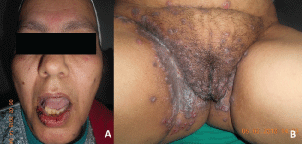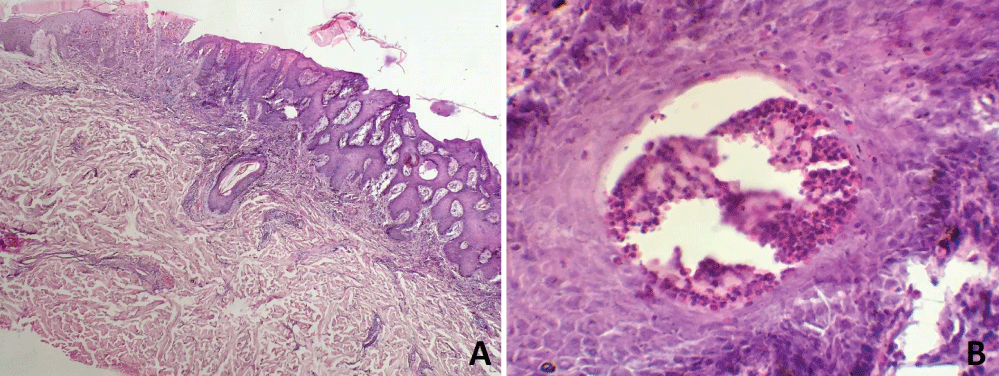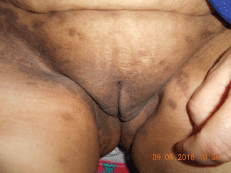Pemphigus vegetans is a variant of pemphigus vulgaris and is the rarest form of pemphigus. It is classified based on the clinical picture and evolution as the Neumman type or Hallopeau type. We report a 50-year-old woman with a Neumann type of pemphigus vegetans who was successfully treated with corticosteroids.
Neumann subtype, Pemphigus vegetans, Corticosteroids
Pemphigus vegetans is a rare clinical form of pemphigus, two clinical subtypes of pemphigus vegetans exist, which are initially characterized by bullae and erosions (the Neumann subtype) or pustules (the Hallopeau subtype). We report a 50-year-old woman with a Neumann type of pemphigus vegetans who was successfully treated with corticosteroids.
A 50-year-old woman presented with a 2-months history of vegetating plaques on the inframammary, axillary and inguinal folds with erosions of the oral mucosa, and perioral area. There was no history of other skin disease. She had no family history of a blistering disorder. On physical examination, there were oozing, erosive vesicles on the lip and hypertrophic verrucous vegetative plaques on the inframammary, axillary and inguinal folds (Figure 1). Biopsy specimens were obtained from the verrucous plaque on the inguinal folds. The histologic findings showed massive papillomatosis and spongiosis, as well as eosinophilic granulocytes throughout the entire thickness of the epithelium. In addition to eosinophilic spongiosis, we also found suprabasal acantholysis (Figure 2). Although direct immunofluorescence was negative, Indirect immunofluorescence reveals circulating anti-epithelial cell-surface IgG which confirmed the diagnosis of pemphigus vegetans. The patient was treated with oral Prednisone 60 mg daily, The erosive vesicular and verrucous lesions were healed 2 weeks. She has not had any recurrence of the lesions since (Figure 3).
Pemphigus vegetans is a rare variant of pemphigus that is characterized by vegetative lesions mainly in flexions, although lesions can occur at any site, this disorder affects middle-aged adults [1]. Two types of Pemphigus vegetans are recognized (Neumann and Hallopeau subtype), which are differentiated according to their clinical presentation, their evolution and their response to treatment [2]. Clinical findings, histopathological, direct and indirect immunofluorescence studies allow the clinician to make the correct diagnosis [3]. Treatment of pemphigus vegetans is similar to that for pemphigus vulgaris, and this is normally accomplished with systemic steroids [4]. The addition of immunosuppressants, such as azathioprine, mycophenolate mofetil and cyclosporine, can improve remission rates and allow steroid sparing effect [5].
In these uncommon diseases, careful analysis of the clinical and histological results allowed us to establish a diagnosis and treat the patient successfully.
The authors do not declare any conflict of interest for this work.
All authors were actively involved in the development of this work.

Figure 1: Erosive vesicles on the lip (A) and hypertrophic verrucous vegetative plaques on the inguinal folds (B).

Figure 2: A biopsy of the vegetating plaque from the inguinal folds showed a hyperplastic epidermis, eosinophilic spongiosis, and intraepithelial abscesses packed with eosinophils (A: H&E, ×10 - B: H&E, ×40).

Figure 3: Evolution of lesions after 2 weeks of treatment.